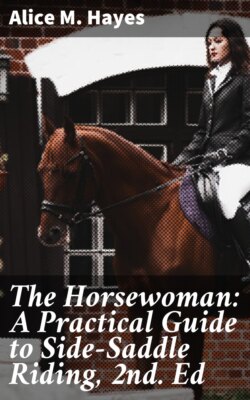Читать книгу The Horsewoman: A Practical Guide to Side-Saddle Riding, 2nd. Ed - Alice M. Hayes - Страница 13
На сайте Литреса книга снята с продажи.
ОглавлениеFig. 12.—Grip with improved leaping head.
3. Usually, the leaping head is attached to the tree by means of a screw, which is an arrangement that has the disadvantage of not allowing the leaping head to be placed close to the upper crutch. If the leaping head is riveted on to the tree (as in Figs. 10 and 16), which is the better plan, it can be placed as near as we like to the upper crutch, and it will have no tendency to wobble about, as it would be apt to do, if it was fixed by a screw. As the screws of the leaping heads of cheap saddles are almost always made of annealed iron, which is a form of cast-iron, it is not an uncommon occurrence for the screw of one of these saddles to break, which is more apt to occur at a critical moment, as for instance when the horse is jumping or “playing up,” than when he is going quietly. On the only occasion I ever rode over a fence in one of these cheap Walsall saddles, the screw broke, but luckily I “remained.”
4. When the leaping head is a fixture, the bearing surface which it presents to the rider’s left leg should be in the same direction as the upper part of that limb, so that the pressure on it may be evenly distributed. By placing a straight stick under the leaping head, and holding it in the direction which the left thigh would occupy, when the rider is mounted, we can easily see if the bearing surface is in the proper position.
5. As an aid to security of seat, it is well to have the under surface of the leaping head and the off side of the upper crutch covered with rough brown leather, which, we should bear in mind, is concealed from view, when the lady is in the saddle, and consequently it will not detract from the smartness of her appearance.
Fig. 13.—Grip with ordinary leaping head.
